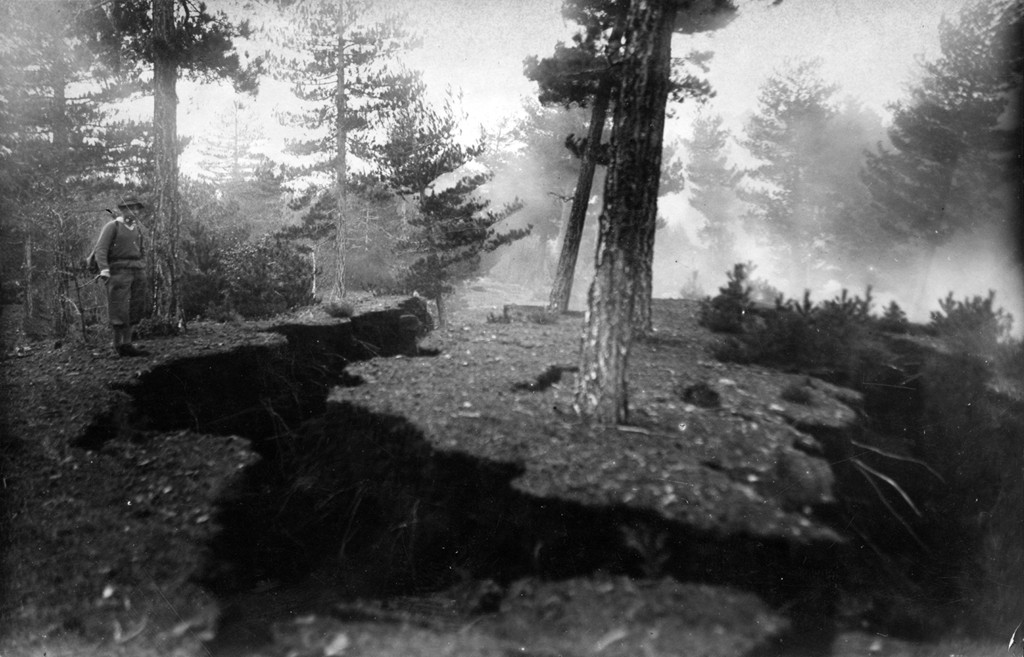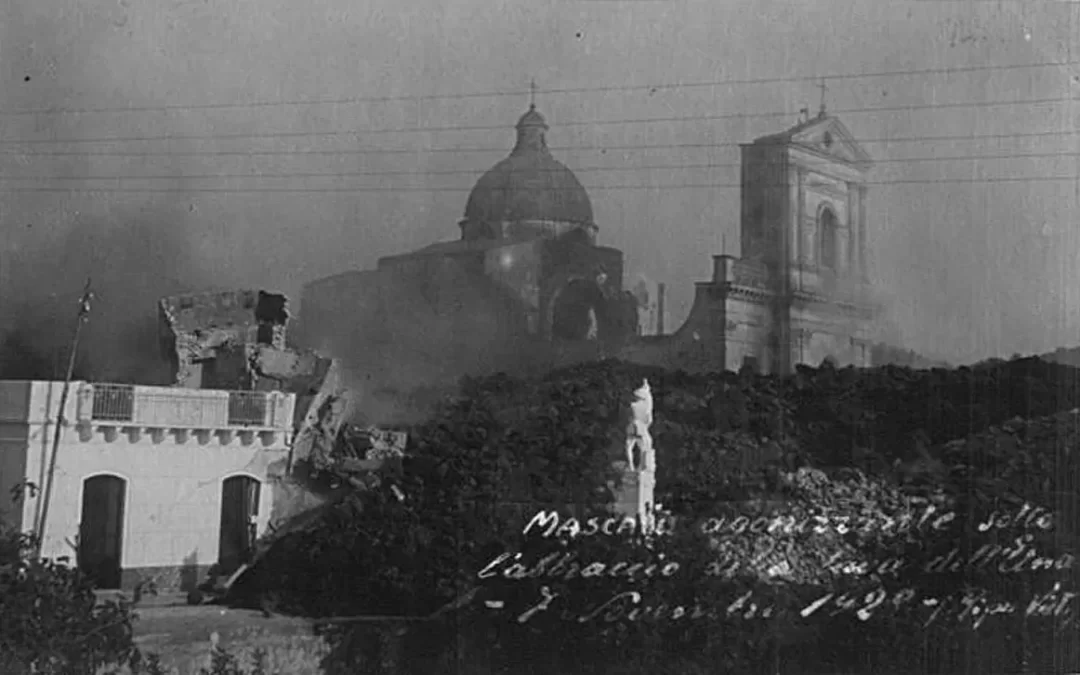Destruction and reconstruction of Mascali
the last one that destroyed a town; the only recent lava flow that stopped a few hundred meters from the sea, at an altitude of 25 m above sea level; and one of the eruptive events that, together with that of 1669, had a stronger socio-economic impact in the history of Etna.
The 1928 eruption is an impressive example of the destructive power of Etna’s volcanic activity, not so much because of the destruction caused by the lava on the surface, but because the fractures formed extended over a huge area. The strong pressure from underground created a whole series of fractures that were kilometres apart, both in terms of distance and height.
Chronicle of the eruption
On 2 November 1928, the first small fracture opened in the ground in the Valle del Leone valley at 2600 m above sea level. Half a kilometre long and active for about an hour, it created a small lava flow.
On 3 November, a second, medium-sized opening formed on the slope of the old volcano building, near the place where the Salvatore Citelli hut of the Italian Alpine Club now stands. The lava flow originated in the Serra delle Concazze area and moved towards the northeast, as far as the Cerrita forest and the Cubania pine forest. At an altitude of 2300 to 1560 m, it remained active for about a day and produced a lava flow 3.8 km long.

On 4 November, the prelude to the most dramatic and destructive phase of this eruption began: in the beautiful area of Ripa della Naca, at an altitude of 1200 m, the third fracture opened, only 100 metres long but much deeper. Unfortunately, the lava flow was able to move extremely fast during the first 12 hours as it flowed in the riverbed of the Pietrafucile stream. At a speed of 0.46 kilometres per hour, it covered a total of 6 kilometres, bringing the lava front up to a height of 350 metres.
A fatal coincidence was the confluence with the Vallonazzo stream, which on 6 November brought the lava up to the centre of Mascali, which was practically completely destroyed in just 2 days. From then on, the lava slowed down considerably, on the one hand because of the low slope of the terrain, and on the other hand because at the 9. and 10 November, some tributaries of the lava river formed, taking away the power of the main river.
After reaching a length of 9.4 km, the lava flow stopped at a height of 25 m above sea level on 12 November. At the fracture at 1200 m, a final lava vent opened, but its lava flows overlapped the previous ones and thus did no damage. After 17 days of volcanic activity and about 50 million cubic metres of ejected lava, the eruption ended on 19 November.
The reconstruction of Mascali and the current situation
A lucky thing for the inhabitants of Mascali was that the fascist regime wanted to demonstrate that they could organise aid for the population, especially for the less well-off people. They also wanted to boast about the possibilities and the functioning of the fascist gear, so that the new city centre was rebuilt in 1937 after only 9 years.
Today, the town of Mascali has about 14,000 inhabitants and is an example of fascist architecture based on rationalism and neoclassicism. Almost nothing remains of the 1500-year history and tradition of the town, which for centuries was the centre of the great county of Mascali, one of the richest regions of eastern Sicily, especially for the production of wine.
In fact, the roots of Sicilian viticulture can be found in this region, which – even though reliable historical sources are lacking – is due to Greek rule, which began around 730 BC. began. They imported the first cuttings to produce the nectar, which was indispensable for the celebrations in honour of Dionysus, the god of vegetation, flowers, trees, wine and beer.
To date the red vines of the Etna DOC (this certificate of origin was established in 1968) have as its main ingredient the native grape Nerello Mascalese, which takes its name from this area.
This story of Mascali highlights how thin the border is between the two faces of nature and of mother Etna: sometimes mother and other times stepmother. On the one hand, the destructive power of the lava flows, on the other hand, the extremely fertile soil, which is able to give us many delicacies.
